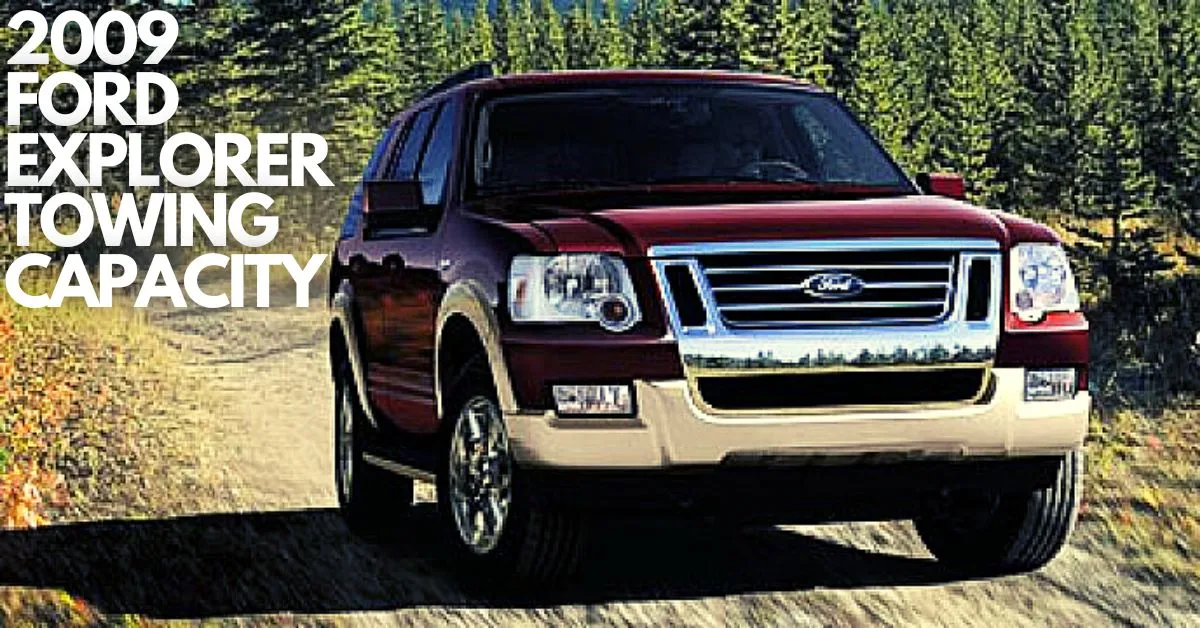2009 Ford Explorer towing capacity chart.
With the 2009 Ford Explorer, you’re driving one of the most popular, versatile, and extravagant having an exceptional mixture of power, and adaptability. Explorer is a proven off-roader with a powerful towing machine that is very comfortable and accommodating, with room for all your stuff. Most tow ratings do not tell you in detail about towing capacity which varies with different configurations. In this article let’s take a look at the trim, engine options, and the 2009 Ford Explorer’s towing capacity in detail.
| 2009 Ford Explorer trim levels | 2009 Ford Explorer towing capacity |
| Ford Explorer XLT | 3,500 – 5,375 lbs. |
| Ford Explorer EDDIE BAUER | 3,500 – 7,285 lbs. |
| Ford Explorer Limited | 3,500 – 7,285 lbs. |
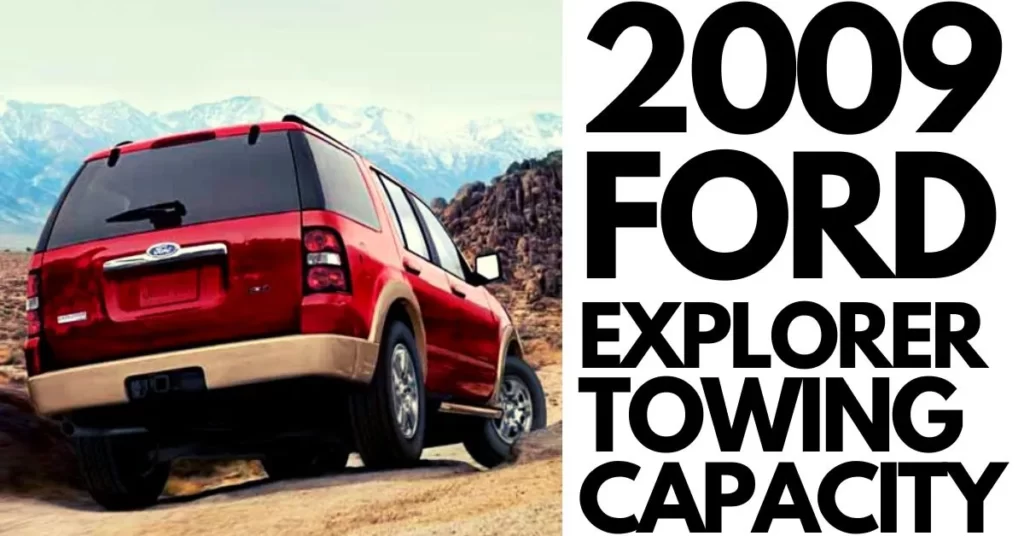
Table of Contents
Towing trailers beyond the maximum recommended gross trailer weight exceeds the limit of your vehicle and could result in engine damage, transmission damage, structural damage, loss of vehicle control, vehicle rollover, and personal injury. Do not exceed the GVWR or the GAWR specified on the certification label.
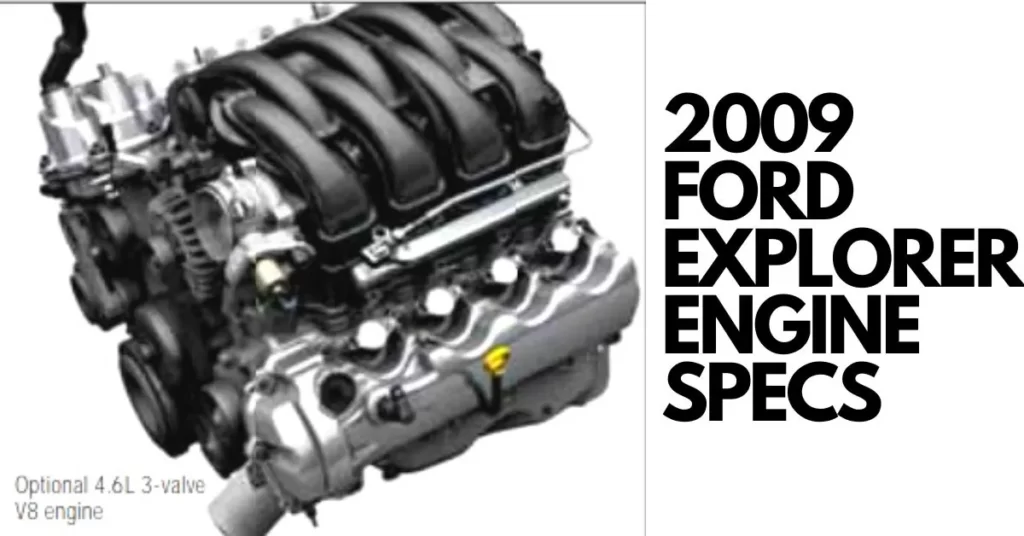
2009 Ford Explorer Engine Specs
| Engine | 4.0L SOHC V6 | 4.6L 3V V8 |
| Horsepower | 210 hp @ 5,100rpm | 292 hp @ 5,700rpm |
| Torque | 254 lb.-ft. @ 3,700rpm | 315 lb.-ft. @ 4,000 rpm |
| Compression ratio | 9.7:1 | 9.8:1 |
| Transmission | 5-speed automatic | 6-speed automatic |
Note: Specific states require electric trailer brakes for trailers over a specified weight. Be certain to review state regulations for this determined weight. The maximum trailer weights listed could be limited to this specified weight, as the vehicle’s electrical system may not include the wiring connector needed to activate electric trailer brakes.
2009 Ford Explorer 4×2 towing capacity
| Engine | Trailer Class towing | Axle Ratio | GCWR (lbs.) | Maximum Trailer Weight (lbs.) |
| 4.0L SOHC V6 | Class II Class III/IV | 3.55 3.73 | 8,500 10,000 | 3,500 5,375 |
| 4.6L 3V V8 | Class II Class III/IV | 3.55 3.55 | 8,500 12,000 | 3,500 7,285 |
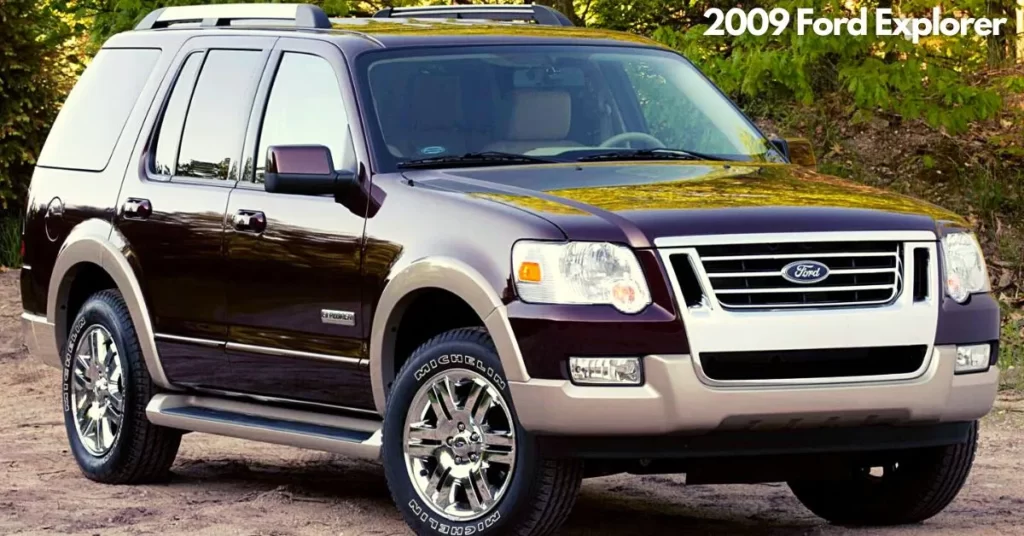
2009 Ford Explorer Class III/IV Trailer Tow Package
The trailer towing packages increase your Explorer’s towing capacity. Each allows for heavier hauls and expands the options of what you can take with your SUV. When properly equipped with Class III/IV Trailer Tow Package for maximum towing capabilities. Towing a trailer places an extra load on your vehicle’s engine, transmission, axle, brakes, tires, and suspension. Check these parts periodically during, and after, any towing function.
Also Read: What is the difference between Class 3 and Class 4 trailer hitch? Hitch receiver types and sizes are important when you are towing trailers, campers, RVs, or other equipment with your vehicle. There are different trailer hitch classes available in the market with unique characteristics. Explore the major difference between Class 3 and Class 4 Trailer Hitch (With Comparison). Read more....
Class III/IV Trailer Tow Package
- 7-pin trailer wiring harness and connector.
- 7- to 4-pin adapter.
- Engine oil cooler. (V6 only)
- Frame-mounted hitch receiver. (3.73 non-limited-slip rear axle required and only available with 4.0L V6)
Maximum towing capabilities are for properly equipped vehicles with required equipment and vary based on cargo, vehicle configuration, accessories, option content and number of passengers. See label on door jamb for carrying capacity of a specific vehicle. For additional information, see your vehicle owner's manual.
2009 Ford Explorer 4×4 & AWD towing capacity
| Engine | Trailer Class towing | Axle Ratio | GCWR (lbs.) | Maximum Trailer Weight (lbs.) |
| 4.0L SOHC V6 | Class II Class III/IV | 3.55 3.73 | 8,500 10,000 | 3,500 5,205 |
| 4.6L 3V V8 | Class II Class III/IV | 3.55 3.55 | 8,500 12,000 | 3,500 7,115 |
Reminder: Ford Explorer does not offer factory-installed towing equipment for this application; only available as a dealer accessory. Do not exceed the trailer weight for your vehicle configuration listed in the chart above.
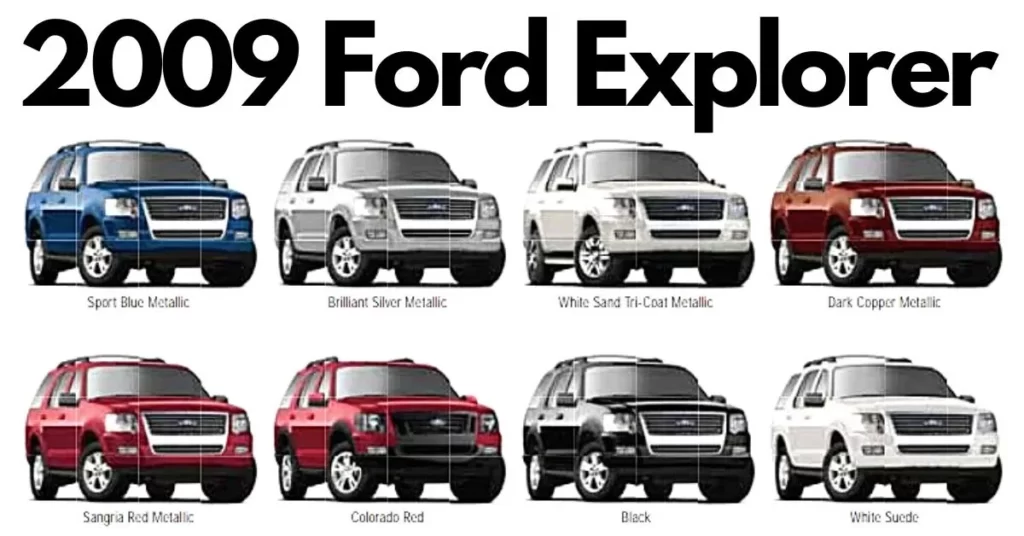
Weight-distributing hitch
Do not use hitches that clamp onto the vehicle bumper; use a load-carrying hitch. You must distribute the load in your trailer so that 10–15% of the total weight of the trailer is on the tongue, not to exceed the maximum tongue load of 500 lb (227 kg) on a Class III receiver.
- Class II receiver: 350 lb. (159 kg)
- Class III/IV receiver: 500 lb. (227 kg) (weight carrying); 740 lb. (336 kg)
When hooking up a trailer using a weight-distributing hitch, always use the following procedure:
- Park the vehicle (without the trailer) on a level surface.
- This is H1 measuring the height of the top (H1) of the front wheel opening on the fender.
- Attach the trailer to the vehicle without the weight-distributing bars connected.
- This is H2 measuring the height of the top of the front wheel opening on the fender a second time.
- Install and adjust the tension in the weight-distributing bars so that the height of the front fender is approximately halfway between H1 and H2.
- Check that the trailer is level. If not level, adjust the ball height accordingly and repeat Steps 3–6.
Note: Do not adjust a weight-distributing hitch to any position where the rear bumper of the vehicle is higher than it was before attaching the trailer. Doing so will defeat the function of the weight-distributing hitch, which may cause unpredictable handling, and could result in serious personal injury.
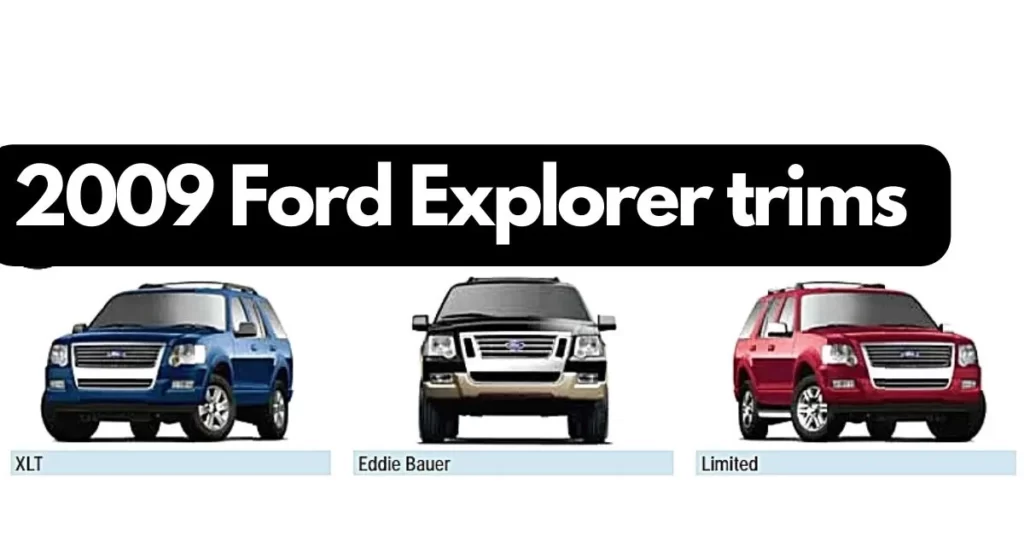
2009 Ford Explorer trims
The 2009 Ford Explorer comes in three models: Explorer XLT, Explorer Eddie Bauer, and Explorer Limited. Let’s find out more about all the details of the maximum towing potential of each of the trim levels of the 2009 Explorer lineup below.
2009 Ford Explorer XLT towing capacity
The 2009 Ford Explorer base trim is equipped with all standard features, plus highlighted features are 16″ painted-aluminum wheels, Body-color bumpers & wheel-lip moldings, 4-bar chrome grille, Black roof side rails & crossbars, Fog lamps, Black power side view mirrors with security approach lamps, AM/FM stereo/single-CD player with MP3 capability, Auxiliary audio input jack, 2-line message center with outside temperature display, Premium cloth 1st-row bucket seats with 6-way power driver seat, driver manual lumbar, and 2-way adjustable head restraints. The maximum towing capacity when equipped properly is between 3,500 to 5,375 pounds.
2009 Ford Explorer Eddie Bauer towing capacity
The 2009 Ford Explorer EDDIE BAUER® trim is equipped with select standard XLT features, plus: offers 17″ painted-aluminum wheels, Pueblo Gold lower front bumper, 3-bar chrome grille with nostrils, Automatic headlamps, Body-color power side view mirrors with security approach lamps, SecuriCode keyless-entry keypad, Step bars with Pueblo Gold accents, Leather-trimmed, heated 1st-row bucket seats with 10-way power driver seat, including power lumbar & recline, SIRIUS Satellite Radio, Ford SYNC, Auto-dimming rearview mirror, 4-line message center with outside temperature display and compass. The maximum towing capacity when equipped properly is between 3,500 to 7,285 pounds.
2009 Ford Explorer Limited towing capacity
The 2009 Ford Explorer Limited trim is equipped with select standard Eddie Bauer features, plus: 18″ chrome-clad aluminum wheels, a 4-bar chrome grille, Step bars with chrome accents, Reverse Sensing System, Leather-trimmed, Unique woodgrain interior inserts, heated 1st-row bucket seats with a 10-way power driver seat, including power lumbar, recline, memory; & 6-way power passenger seat with manual lumbar, PowerFold 3rd-row seat, Power-adjustable pedals with memory, Premium Sound System with AM/FM stereo/6-disc in-dash CD changer, subwoofer & 190 watts, Dual-zone Electronic Automatic Temperature Control, Auxiliary rear climate control, and Universal Garage Door Opener. The maximum towing capacity when equipped properly is between 3,500 to 7,285 pounds.
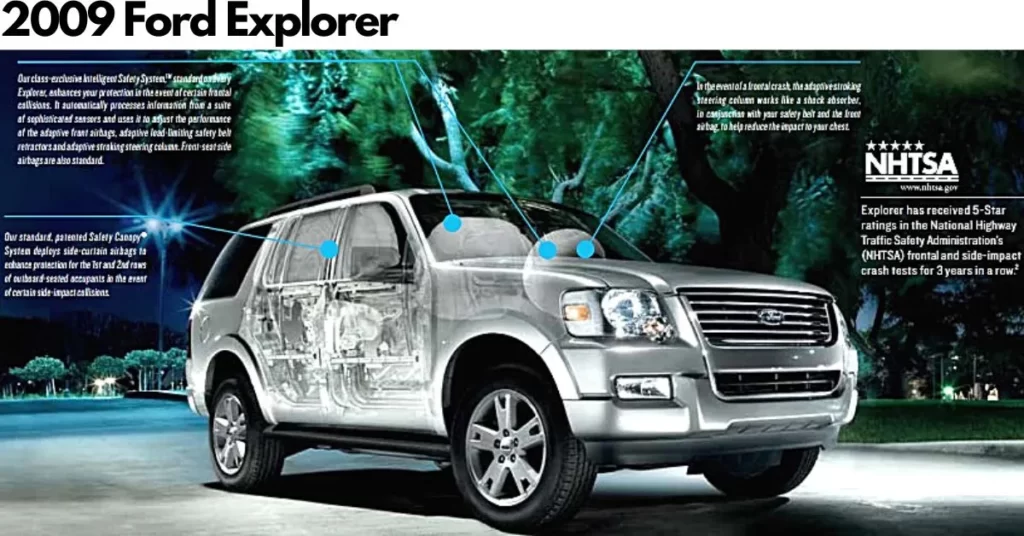
Explore more: 2023 Ford Explorer towing capacity. 2022 Ford Explorer towing capacity. 2021 Ford Explorer towing capacity. 2020 Ford Explorer towing capacity. 2019 Ford Explorer towing capacity. 2018 Ford Explorer towing capacity. 2017 Ford Explorer towing capacity. 2016 Ford Explorer towing capacity. 2015 Ford Explorer towing capacity. 2014 Ford Explorer towing capacity. 2013 Ford Explorer towing capacity. 2012 Ford Explorer towing capacity. 2011 Ford Explorer towing capacity. 2010 Ford Explorer towing capacity. 2008 Ford Explorer towing capacity. 2007 Ford Explorer towing capacity. 2006 Ford Explorer towing capacity. 2005 Ford Explorer towing capacity. 2004 Ford Explorer towing capacity. 2003 Ford Explorer towing capacity.
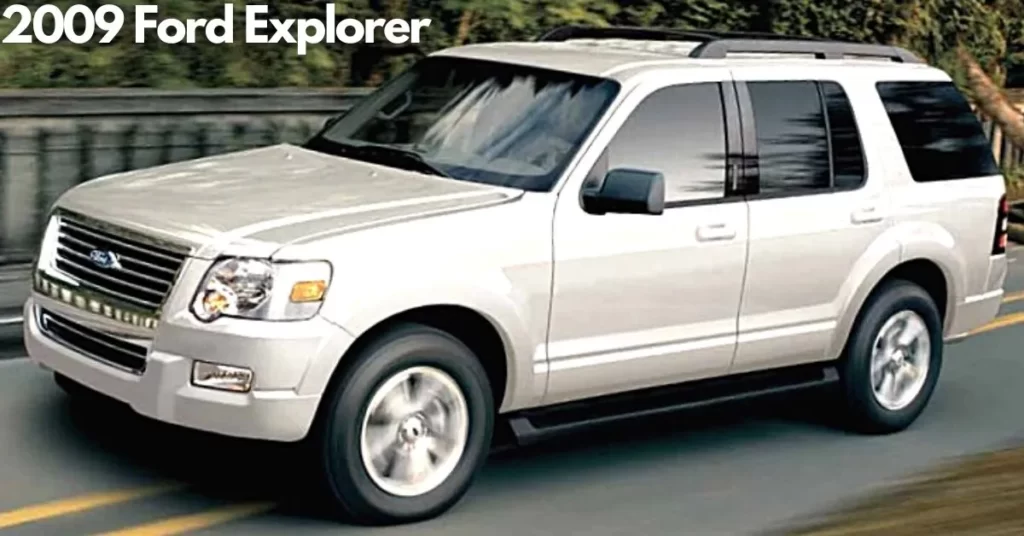
The load capacity of your vehicle is designated by weight not volume. Towing a trailer places extra load on the engine, transmission, axle, brakes, tires, and suspension. To help minimize how trailer movement affects your vehicle when driving.
- Load the heaviest items closest to the trailer floor.
- Load the heaviest items centered between the left and right side trailer tires.
- Load the heaviest items above the trailer axles or just slightly forward toward the trailer tongue. Do not allow the final trailer tongue weight to go above or below 10–15% of the loaded trailer weight.
- Select a tow bar with the correct rise or drop. When both the loaded vehicle and trailer are connected, the trailer frame should be level, or slightly angled down toward your vehicle, when viewed from the side.
Loaded vehicles may handle differently than unloaded vehicles. Extra precautions, such as slower speeds and increased stopping distance should be taken when driving a heavily loaded vehicle.
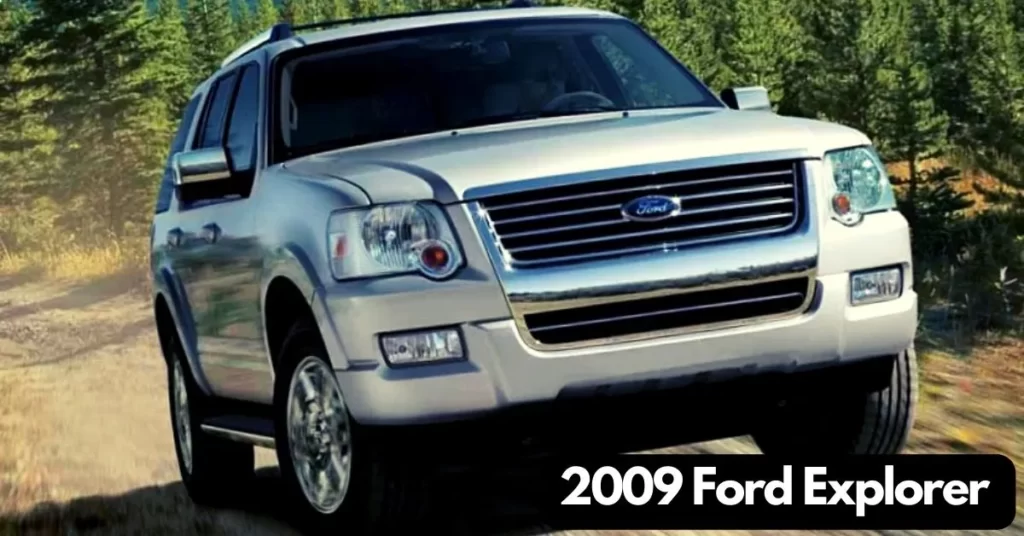
2009 Ford Explorer towing features
The 2009 Ford Explorer is also equipped with Hill Descent Control, which modulates the descent on rough terrain, without the driver needing to apply the brakes. For towing, combined with Curve Control, which reduces the throttle and applies the brakes when you enter a curve too quickly, significantly improves the safety of small trailer towing.
- Advance Trac with RSC (Roll Stability Control): It enhances vehicle stability in a wide range of conditions. By selectively applying individual brakes and modifying engine power, the system helps keep all four wheels firmly planted. In addition, Curve Control helps slow the vehicle down if you’re heading into a curve too quickly.
- BLIS® with Cross-Traffic Alert: Changing lanes requires your full attention. BLIS (Blind Spot Information System) can help by alerting you to vehicles detected in your blind spots. Cross-Traffic Alert helps by detecting and alerting you to traffic behind your vehicle as you’re slowly backing up.
- Cruise Control: It can also alert you to a potential collision and helps maintain your choice of speed and preset gaps from the vehicle in front of you. If one is detected, the system flashes a warning, sounds an alarm, and can pre-charge the brakes to provide full responsiveness when you do brake.
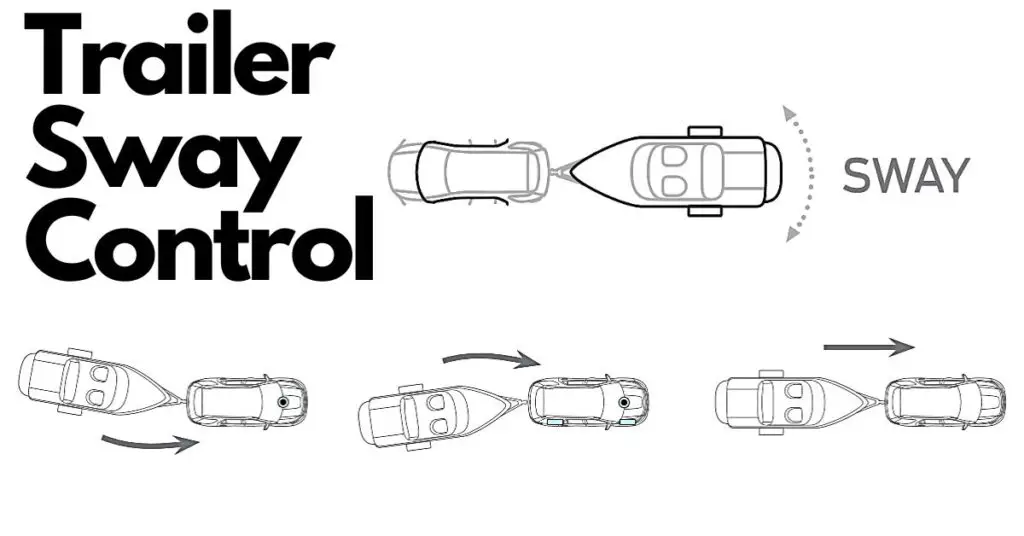
Trailer Sway Control
This feature applies your vehicle brakes at individual wheels and, if necessary, reduces engine power. If the trailer begins to sway, the stability control light flashes. Slow your vehicle down, pull safely to the side of the road, and check for the correct load distribution. Turning off trailer sway control increases the risk of loss of vehicle control, serious injury, or death.
Note: This feature does not prevent trailer sway, but reduces it when it begins. This feature cannot stop all trailers from swaying. In some cases, if your vehicle speed is too high, the system may turn on multiple times, gradually reducing your vehicle speed.
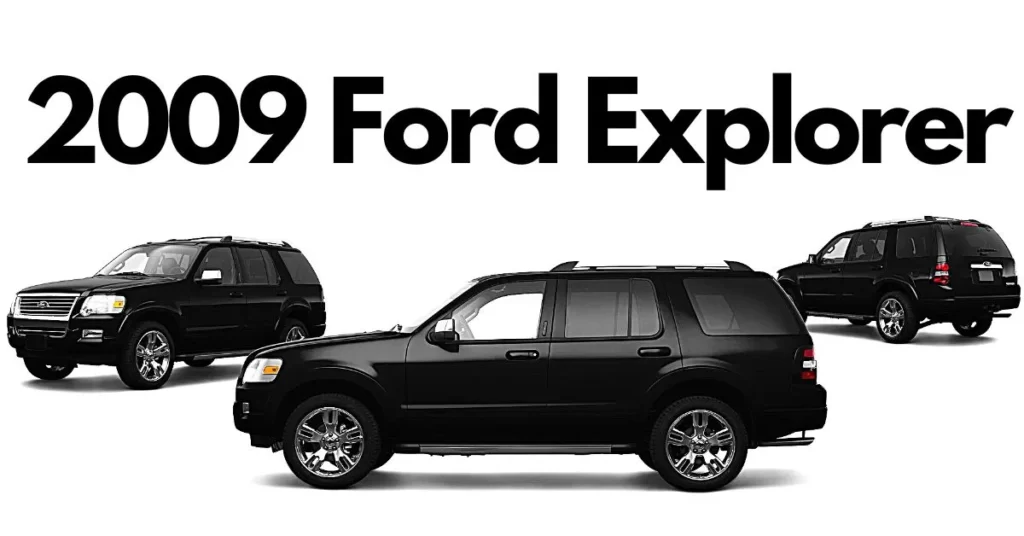
Reminder: Ford Explorer does not offer factory-installed towing equipment for this application; only available as a dealer accessory. Do not exceed the trailer weight for your vehicle configuration listed in the chart above. Maximum weights shown are for properly equipped vehicles with required equipment and a driver. Weight of additional options, equipment, passengers and cargo must be deducted from this weight.
2009 Ford Explorer towing guide
- Do not tow a trailer until you drive your vehicle at least 1000 miles. Also, do not drive faster than 70 mph.
- See the instructions included with towing accessories for the proper installation and adjustment specifications.
- Service your vehicle more frequently if you tow a trailer. See your scheduled maintenance information.
- Check your hitch, electrical connections, and trailer wheel lug nuts thoroughly after you have traveled 50 miles.
- When stopped in blocked or heavy traffic during hot weather, place the gearshift in position P to aid engine and transmission cooling and to help air conditioning performance.
- Turn off the speed control with heavy loads or in hilly terrain. The speed control may turn off automatically when you are towing on long, steep grades.
- Shift to a lower gear when driving down a long or steep hill. Do not apply the brakes continuously, as they may overheat and become less effective.
- Use the Grade Assist or Tow/Haul feature when towing. These provide engine braking and help eliminate excessive transmission shifting for optimum fuel economy and transmission cooling.
- Allow more distance for stopping with a trailer attached. Anticipate stops and brake gradually.
Aaron Bennett is an accomplished author and a true aficionado when it comes to pickup trucks. With an unwavering passion for all things automotive, Aaron has dedicated his life to exploring the world of pickups and sharing his expertise with others. As the proud owner of several powerful machines, he has spent countless hours behind the wheel, navigating rugged terrains and conquering highways with unrivaled enthusiasm.

